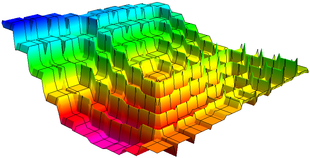10-327/Classnotes for Thursday October 14: Difference between revisions
From Drorbn
Jump to navigationJump to search
No edit summary |
Johnfleming (talk | contribs) No edit summary |
||
| Line 18: | Line 18: | ||
[http://katlas.math.toronto.edu/drorbn/images/9/97/10-327-lec09p06.jpg Lecture 9 page 6] |
[http://katlas.math.toronto.edu/drorbn/images/9/97/10-327-lec09p06.jpg Lecture 9 page 6] |
||
==Riddles== |
|||
===The Dice Game=== |
|||
Two players A and B decide to play a game. |
|||
Player A takes 3 blank dice and labels them with the numbers 1-18. |
|||
Player B then picks one of the three die. |
|||
Then Player A picks one of the remaining two die. |
|||
The players then roll their dice, and the highest number wins the round. |
|||
They play 10,023 rounds. |
|||
Who would you rather be Player A or B? |
|||
===Almost Disjoint Subsets=== |
|||
Find an uncountable collection of subsets of <math>\mathbb{N}</math> such that any two subsets only contain a finite number of points in their intersection. Don't cheat and use the axiom of choice! |
|||
*I wasn't there for this riddle but it sounded interesting, though I might have the phrasing wrong - John. |
|||
Revision as of 16:10, 18 October 2010
| ||||||||||||||||||||||||||||||||||||||||||||||||||||||||||||
See some blackboard shots at BBS/10_327-101014-142707.jpg.
| Dror's notes above / Student's notes below |
Here are some lecture notes..
Riddles
The Dice Game
Two players A and B decide to play a game. Player A takes 3 blank dice and labels them with the numbers 1-18. Player B then picks one of the three die. Then Player A picks one of the remaining two die. The players then roll their dice, and the highest number wins the round. They play 10,023 rounds. Who would you rather be Player A or B?
Almost Disjoint Subsets
Find an uncountable collection of subsets of such that any two subsets only contain a finite number of points in their intersection. Don't cheat and use the axiom of choice!
- I wasn't there for this riddle but it sounded interesting, though I might have the phrasing wrong - John.

![{\displaystyle [0,1]}](https://wikimedia.org/api/rest_v1/media/math/render/svg/738f7d23bb2d9642bab520020873cccbef49768d)




